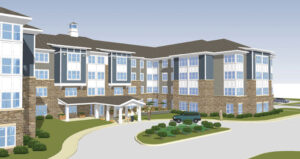California, often dubbed the Golden State, is renowned for its breathtaking coastlines, tech hubs, and vibrant culture. But beyond its glittering cities and scenic beauty, California grapples with addressing the housing needs of its growing senior population. In this post, we will unpack the senior housing landscape in California and how it corresponds with the increasing number of residents aged 65 and older.
1. Aging in the Golden State California’s senior population is on the rise. According to the latest data, by 2030, nearly 20% of California’s residents will be 65 or older. As the ‘Baby Boomer’ generation enters its golden years, the demand for senior-centric housing is growing at an unprecedented rate.
2. Spectrum of Senior Housing in California To meet the varying needs of its elderly residents, California offers an array of housing options:
- Independent Living Communities: Tailored for seniors who desire a maintenance-free lifestyle filled with recreational and social opportunities, all while living independently.
- Assisted Living Facilities: Designed for those who may require assistance with daily activities but want to maintain a semblance of independence. They combine housing, support services, and healthcare as needed.
- Nursing Homes: For seniors who need regular medical care, these establishments provide a higher level of medical supervision and attention.
- Memory Care Units: Dedicated to individuals with Alzheimer’s or dementia, these specialized facilities provide secure and structured environments.
3. The High Cost of Living One of California’s defining challenges is its high cost of living. The senior housing market is no exception. Especially in metropolitan areas like San Francisco, Los Angeles, and San Diego, senior housing can be notably expensive. However, there are initiatives and programs aimed at making senior living more affordable for residents on fixed incomes.
4. Embracing Technological Advancements In the heart of innovation, California’s senior housing sector is leveraging technology to better serve its residents. From telehealth services to smart home integrations, technology is being utilized to improve safety, convenience, and overall quality of life for seniors.
5. Challenges on the Horizon
- Supply Constraints: With the rising demand for senior housing, there’s a pressing need to increase the supply of senior-centric units. However, high land costs and strict zoning regulations pose significant challenges.
- Quality and Oversight: Ensuring that facilities, especially those claiming to offer specialized services, meet the requisite standards of care is vital.
- Environmental Concerns: Given California’s susceptibility to wildfires and earthquakes, building and maintaining resilient senior housing facilities is of paramount importance.
6. In Conclusion While California offers a unique blend of cultural, recreational, and climatic benefits that make it attractive to seniors, the state’s senior housing market is marked by both opportunities and challenges. As the demand continues to surge, stakeholders ranging from policymakers to developers must work collaboratively. Addressing the existing challenges head-on will not only ensure that California’s seniors have a safe and comfortable place to call home but will also reinforce the state’s commitment to its elderly population.






